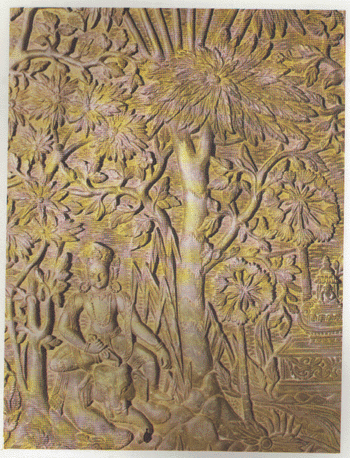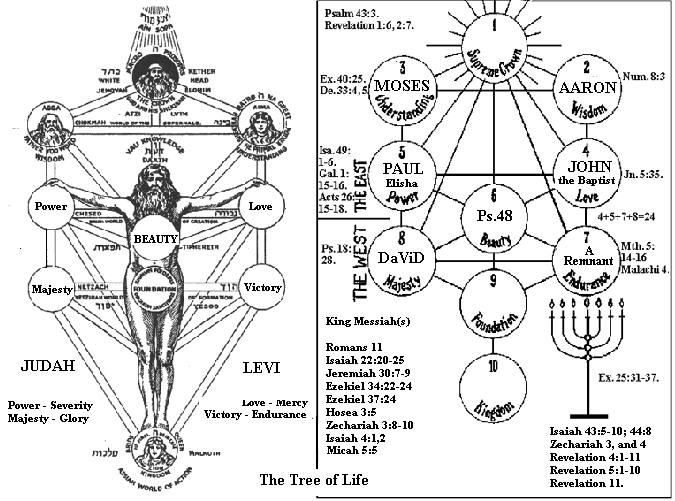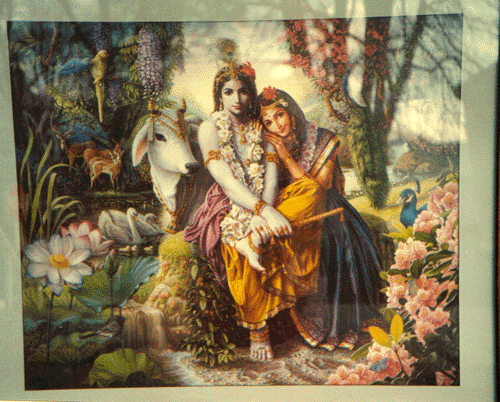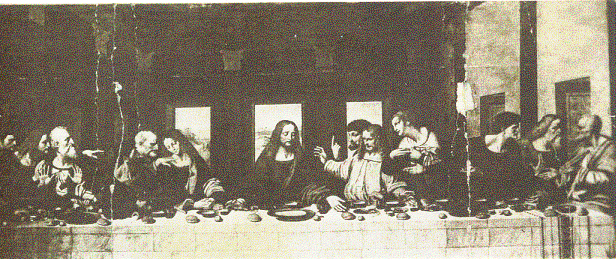
By Holland Cotter
It's easy to forget — and museums will seldom remind you — that much of the art in most of the world before the modern era wasn't made just to sit there looking pretty. It was made to save your soul. Two major museum presentations of Buddhist art in California are filled with art of exactly this kind. One show pays only dutiful attention to that fact; the other doesn't let you lose sight of it for a second.
"The Circle of Bliss: Buddhist Meditational Art" at the Los Angeles County Museum of Art is a rarity for two reasons. It's a big, luxuriant display of truly fabulous religious images, but tightly focused. And it doubles as a step-by-step guided trek over rigorous spiritual and intellectual terrain.
Geographically, it might be said to begin and end in Nepal, at the Svayambhu, the Great Stupa, near Katmandu. To reach the stupa, which is a mound-shaped reliquary thought to hold remains of the Buddha, pilgrims and sightseers climb flights of stone stairs winding up a wooded hill. Apart from the monkeys looking for handouts, you might be in upstate New York. Then you round a corner and, as if out of nowhere, there it is: this enormous spaceship staring down at you with stern, alert eyes.
One of the oldest Buddhist monuments in the world, the Svayambhu is a solid, whitewashed hemisphere of brick and packed rubble surmounted by a square tower painted with pairs of eyes on all four sides. The tower itself is topped by a sun-catching gilded finial from which strings of little flags fly, like yachting colors. Prayer wheels line the stupa base. As you walk around it, you can set each wheel spinning with a sweep of your hand. At every rotation, the idea is, prayers fly up.
A splendid 18th-century copper model of the Svayambhu — the name means self-arisen — appears a few galleries into the Los Angeles show. But by then you've already been introduced to the Buddha and to Nepal, where he was born in the fifth century B.C. His mother, the queen of a tribal kingdom, was traveling, the story goes, and delivered him in a roadside garden. A stone-relief depiction of the nativity scene, dating from the fifth or sixth century A.D and on loan from the National Museum in Katmandu, is one of the oldest pieces in the show.
Essentially Indian in style, the figures of the relief have a smooth, pliant delicacy — arms and legs are like sapling branches — characteristic of carving by Newar artists, members of the ethnic majority in the Katmandu Valley and creators of some of the most beautiful Buddhist art ever made. In fact, the presence of this piece, along with a dozen others on loan from Nepal's national art collections, is a minor event in itself. The last time such things came West was 40 years ago.
As with everything else in this gathering of nearly 150 sculptures, paintings, illuminated books and ritual instruments, charisma is harnessed to an exposition of ideas. One of these ideas entails a rethinking of history. In many traditional accounts, Buddhism and its art make a flying leap from India, were the Buddha spent his life, over the Himalayas to Tibet. Nepal, which lies between the two, is more or less left out, its art viewed either as a raw mix of Hindu and Buddhist elements or as a knockoff of Tibetan styles. The show proposes, more emphatically than has been done elsewhere, that Nepal played a catalytic role in that transmission, in the process developing beliefs, practices and aesthetic styles from which Tibet benefited.
These fall under the general name of Tantric or Esoteric Buddhism, and it is Tantric practice that forms the spine of the show. Spiritually speaking, the crucial moment of the Buddha's life, the moment when he became a buddha, was his enlightenment, the instant he fully internalized an existential concept as plain as A, B, C but profound in its implications.

Under the Tree of Enlightenment
Humans beings want, want, want; and they want to keep what they get forever, which, of course, they cannot do. So, to live is to exist in a state of constant desire. To live in desire is, inevitably, to suffer loss and fear further loss. To get beyond desire and pain, some alternative had to be found. And in that moment, he found one.
But who could benefit from this information? Very early monastic Buddhism insisted that to reach enlightenment required moving through countless turns of the reincarnation cycle, and even then only a few strivers made the grade. Later Buddhism said that anyone willing to follow the teachings can be awakened in this life. Among Tantric Buddhists, anyone willing to pursue a regime of ritual-intensive discipline can reach enlightenment now and, in the process, benefit all other creatures, which is the ultimate goal.

This is where art comes in. The Tantric rituals require special tools. Some of these are meant to be touched, held or worn; others are meant to be meditated on. Contact turns on two-way spiritual currents: the devotee imbues the object with power; the object sends power zooming back. And the other way around. "The Circle of Bliss" asks us to consider nearly every item on view in light of this electric interchange.
It's easiest to see in the case of hand-held ritual instruments, and those assembled are visually riveting: pronged scepters that are like lightning rods for attracting spiritual energies, hand bells that wake the slumbering mind, goblets made from human skulls. Drink deeply of death, they seem to say; let its toxins pass through you, and out, carrying your ego with them.
Like any serious course of instruction, Tantra aims to focus you, expand you; and it uses teaching aids to do so. The painted mandala is one. It's at once visually logical and bafflingly complex; color-coded like a psychedelic version of the New York City subway map, it's an aerial view of a deity's house as vast as the cosmos.
Of the many mandalas in the show, I'll choose just one. Probably created by Newar artists at a Tibetan monastery in the 15th century, it offers a labyrinthine, circles-within-squares topographic chart of heaven and hell, bristling with tiny sprites and monsters. A Tantric teacher, a guru, who knows the image, with its pitfalls and high places, will lead the committed student on a pilgrim's progress to the mandala's center.
There two deities, male and female, are locked in an amorous embrace. The male is named Chakrasamvara, the female, Vajravarahi. Their intertwined bodies are "The Circle of Bliss." Separately they represent the forces of wisdom and compassion; enlightenment is their union. Astonishing examples of these figures, separate and together, from Nepal, Tibet, India, China and Mongolia, form the heart of the exhibition.

Dalet Vaw Dalet
I'm giving you the dummy's version of all of this, which is the one I know. The function and meaning of mandalas and other such objects can be fully explained only by an interpretive calculus of prodigious complexity, one untimately accessible only to initiates.
But the fact of this art's spiritual utility — how it works — is what the show is about. And its organizers — Stephen Markel, the museum's curator of South Asian art; John C. Huntington, a professor of art history at Ohio State University in Columbus; and Dina Bangdel, a visiting assistant professor at Ohio State and the daughter of the late Nepalese art historian Lain Singh Bangdel — demonstrate it with dogged, daring thoroughness, recreating the steps of a specific meditational practice through a combination of art objects, interpretive wall texts and computer-generated illustrations of theological concepts.
As you can guess, the outcome is a very read-as-you-look affair, which is not to everyone's taste. Some viewers will object that the curators have overarticulated concepts at the expense of the objects and will choose to take one and leave the other. Hard-core "art speaks for itself" advocates will be outraged by the didactic interference.
My advice to them? Get over it. If beauty were so self-evident, the South Asian galleries in every museum would be jammed with eager visitors all the time. But they aren't, ever. In part this is because of visual unfamiliarity of the "Daddy why does that person have eight arms" sort. It's also because certain Buddhist art, like any religious art — and, for that matter, much modern secular art — is elaborately coded and will reveal itself only when those codes are unlocked.

This is not to say that "The Circle of Bliss" is a "religious" show. It simply acknowledges, right up front, something we basically know: that all art is, for better and for worse, trying to sell us something — pleasure, ideology, salvation, whatever. The exhibition elucidates both the message being sold in a particular art and the complex mechanics of its delivery. If you find yourself attracted to that message, cool. If not, also cool.
So, obviously, I have no problem with a didactic approach, at least when the reading and the looking are as engrossing as they are here. And for those who want more to read, there is a 600-page catalog with contributions by two dozen of Mr. Huntington's graduate students. It's awesome. When the time comes to hand out awards for art publications, it should rank high on the list of candidates. (The book was produced by the Columbus Museum of Art in Ohio, where the show, which runs in Los Angeles through Jan. 4, will open on Feb. 9.)...
No exhibition involving international loans is a breeze to pull off these days. The Los Angeles museum might have cut corners and cooked up a decent show from its own fine Himalayan collection — much of it assembled by a former curator, Pratapaditya Pal, who almost single-handedly introduced this material to the United States beginning in the 1960's — but it did more. It not only brought treasures from European and Asian institutions, which must have cost a bundle, but did so in the interest of creating a risky, difficult project. Future scholars will be grateful for this...
That art and those ideas are tremendous and exquisite. At their most complex, they propose entire whirling universes of thought and emotion, with bells clanging, lightning flashing. At their most basic, they offer a user's guide for a sane life, greeted daily with unexpectant joy, its end met with unregretful equanimity. Milarepa sang about this:
My mind has delighted in my teacher's counsel;
my mouth has delighted in singing songs of my soul;
my body has delighted in a cotton cloth from Nepal.
I have lived delighting, thus delighting.
Do ye also live rejoicing, thus rejoicing.
Either way, the ideas are far beyond most of us. But how invigorating and reorienting to be brought into a close encounter with them. Sometimes their vision is mild-mannered and humanly scaled, as in the Buddha's nativity. Sometimes it is ferocious and incendiary, as in the Chakrasamvara embrace. Whatever its temperament, it is embodied in art that was precision-tooled for hard labor but that stops you in your tracks with a shock of beauty, as the Buddha's eyes on the stupa do when you reach the top of the hill.
Copyright 2003 The New York Times Company | Home | Privacy Policy | Search
| Corrections | Help | Back to Top